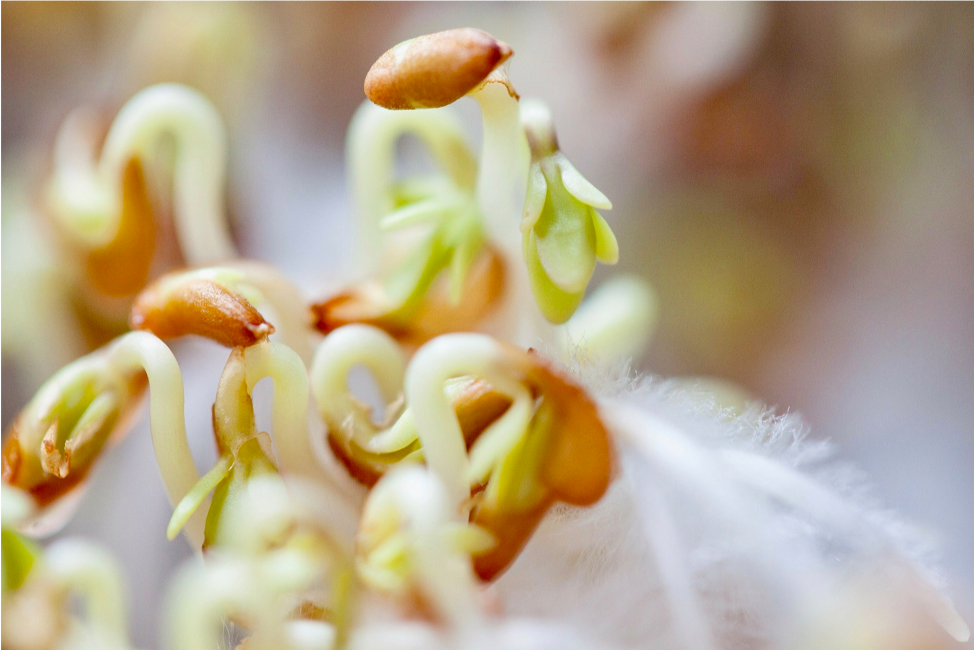En éducation, j’appartiens à la branche« hands-on » de la didactique des sciences. Différents termes sont utilisés pour nommer cette approche pédagogique selon laquelle les élèves sont initiés aux concepts et à la pensée scientifique à partir d’activités d’investigation, d’observation de phénomènes, de manipulation de matériel et de réflexion sur leurs actions.
Je propose donc ici de combiner les activités de jardinage scolaire aux activités d’étude des plantes. Cet article et celui qui suivra sont loin de couvrir l’ensemble du sujet. Il s’agit plutôt d’exemples pour éveiller l’intérêt des élèves.
Attention : les graines commerciales vendues pour le jardinage sont souvent couvertes de fongicide. Il est préférable d’éviter de les faire manipuler par les élèves. Pour ces activités, procurez-vous les graines comestibles disponibles entre autres dans les épiceries et les magasins d’aliments naturels.
La découverte des graines
Il s’agit d’une activité automnale lors de laquelle les élèves partent à la chasse aux graines. Il est bien de les faire travailler en paires afin qu’elles ramassent ensemble le plus grand nombre de graines différentes possible. De retour en classe, les élèves sont invités à classer leurs graines en fonction de la couleur, de la dimension, de la forme, etc. Ils peuvent aussi explorer le comportement de ces graines dans l’eau : flottent-elles ou coulent-elles? Les élèves formulent une hypothèse qu’il leur faut justifier, puis vérifier. Ensuite, ils notent ou dessinent leur démarche dans un cahier de science.
L’activité sur les graines se termine par la fabrication d’une murale à laquelle participe tous les élèves et qui est exposée dans le corridor. Ce type d’activité de clôture permet de passer de l’enseignement des sciences STEM (Science, Technology. Engineering, Mathematics) à STEAM où le A représente les Arts.
La tomate est-elle un fruit ou un légume?
Pour répondre à cette question classique, il importe de prendre en considération le contexte d’usage de la tomate. En alimentation, tout végétal qui se mange généralement salé est nommé légume. Cependant, en botanique il en est tout autrement. Ne sont légumes que les plantes du groupe des fabacées, dont les graines se trouvent dans une gousse : les pois, les haricots, les lentilles, les pois chiches et toutes ces fèves rouges, blanches ou autres. Cependant, ce que l’on mange sont les fruits de ces plantes. Le fruit est l’organe qui sert à protéger les graines des plantes avant qu’elles atteignent leur maturité.
Le fruit est un organe d’une plante à fleurs et certains d’entre eux sont comestibles. Avec les élèves pourquoi ne pas faire une chasse aux graines des fruits comestibles : concombre, poivron, avocat, … les fraises ont-elles des graines? Et les bananes?
Dissection des graines
Il faut choisir de grosses graines telles que des graines de haricots ou de fèves de Lima. Il faut ensuite faire tremper les graines dans l’eau pendant au moins 24 heures, afin d’amollir le tégument, soit l’enveloppe qui recouvre la graine. Distribuez quelques graines à chaque élève et invitez-les à ouvrir délicatement la graine. Que découvrent-ils?
Je recommande l’usage de petites loupes pour bien observer la plantule.
Faire germer les graines
Voici une vidéo de quelques minutes qui explique comment s’y prendre pour faire germer les graines dans le but de manger les pousses. Cette activité est très facile à faire.
Vous pouvez même conserver des graines germées en tout temps dans la classe et permettre aux élèves d’en manger au besoin.






